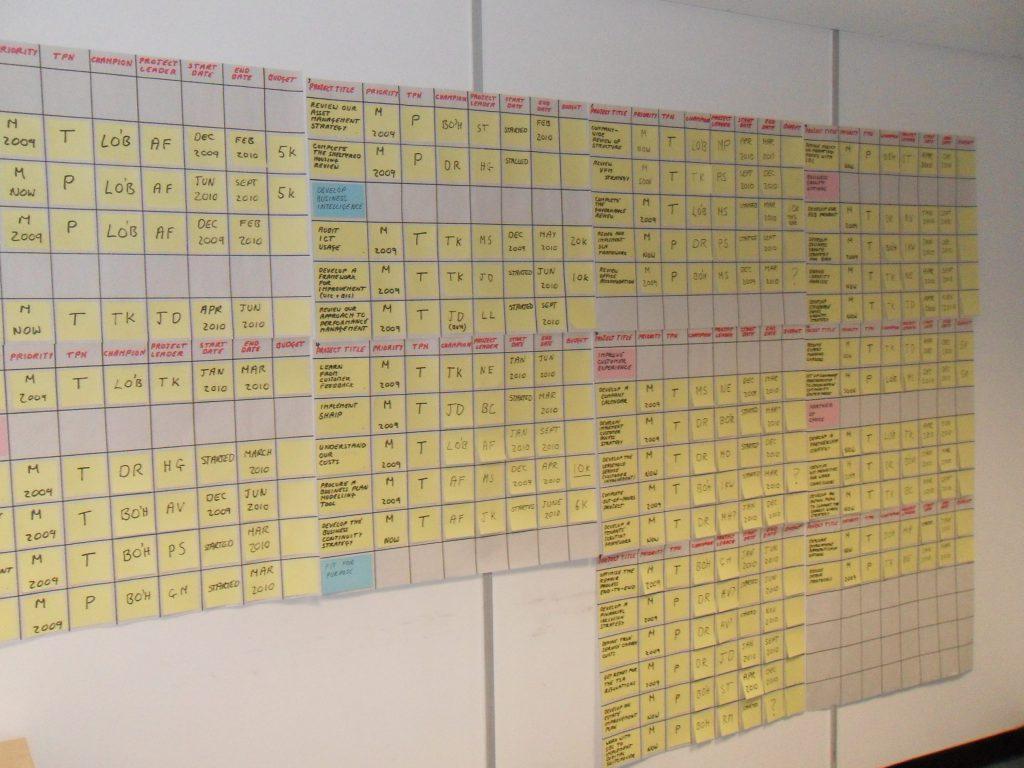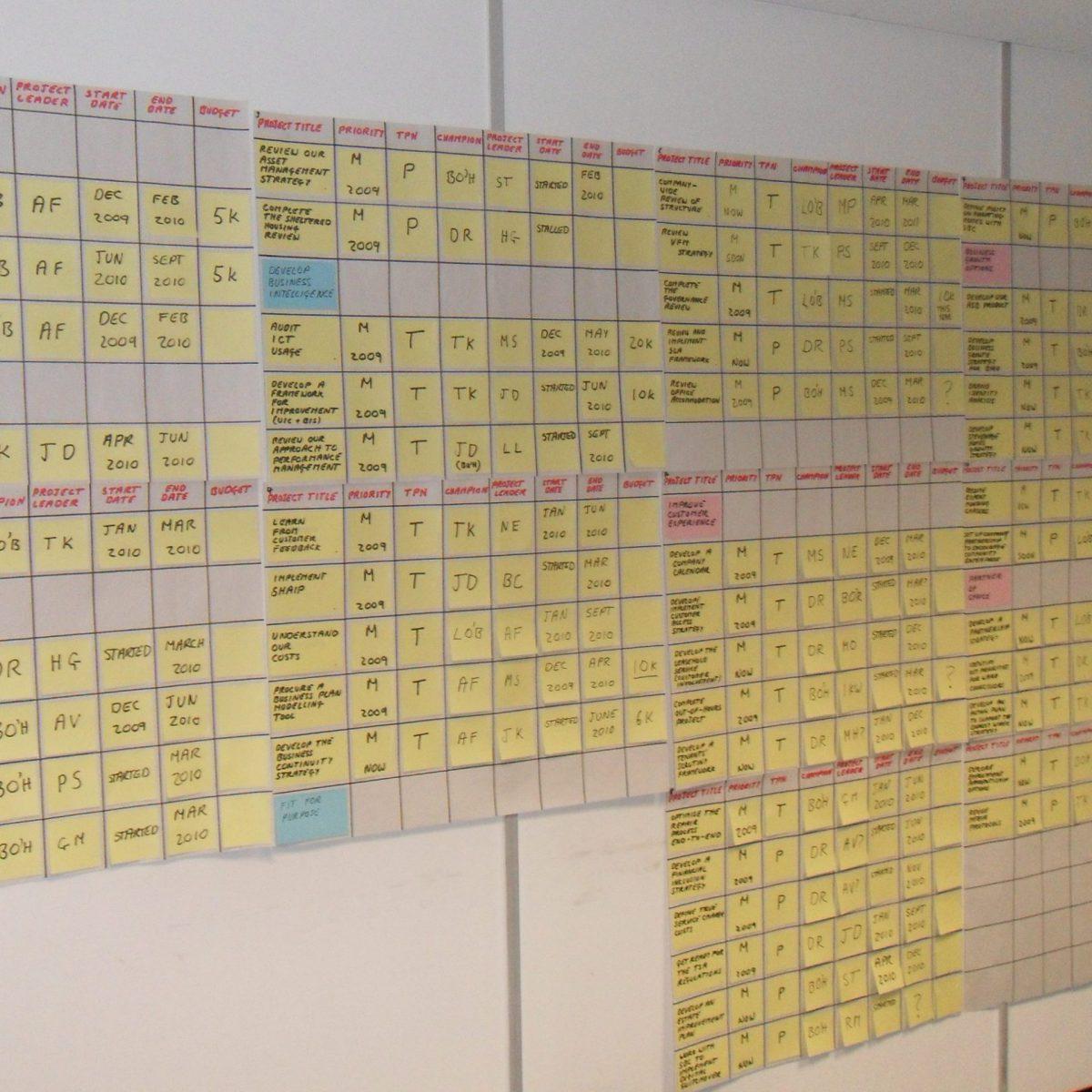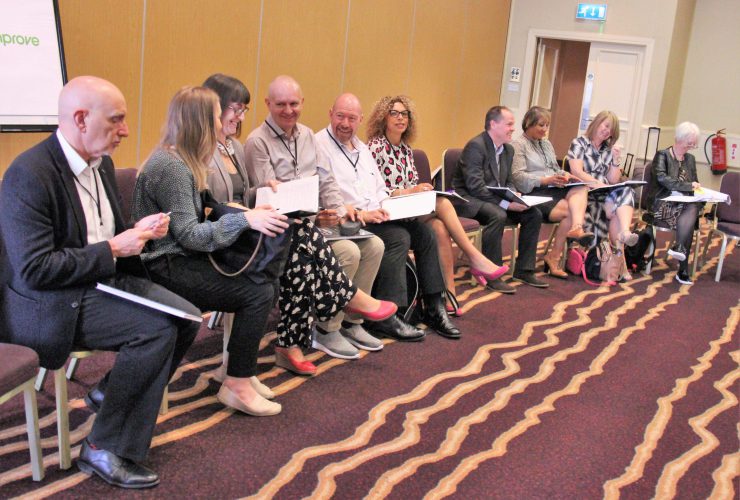The origins of the Project Steering Grid
UIC Associate (and one of ‘original’ UIC Team Members) Bali Maman takes us through a brief history of the Project Steering Grid – and offers some tips for how to get yours up-and-running effectively.

Could this be the world’s most beautiful Project Steering Grid?
Like all good ideas, the Project Steering Grid has its origins in the application of UIMPROVE in the real world and evolved from working with one of our long-standing clients.
The client was Castle Vale Housing Action Trust (CVHAT) which was formed in 1993 to address poor housing and environment as well as economic deprivation in areas that had experienced significant decline.
The work of Castle Vale Housing Action Trust was considered a huge success collecting many awards and accolades along the way.
If you want to learn more about CVHAT you can read about its history and achievements in this excellent account by Adam Mornement: http://www.crp-ltd.co.uk/downloads/cv-no-longer-notorious-book.pdf
In 2000, the UIC supported CVHAT to carry out a mid-term review and a stocktake of achievements to date. CVHAT also wanted to make a long term plan for the next 5 years until the end of the programme. By rigorously following Steering Methodology we identified 35 projects which were high-level, mission-critical and cross-functional.
The projects were clustered by theme, prioritised using Must-Should-Could and Now-Soon-Later and assigned a Project Champion. This was then displayed in the Chief Executive’s office and once a month, taken down for a Steering Group session with the Executive Team where we worked through the status of each project. After each Steering Group session, I transferred the updates into a table so there was a record of any changes.
By the third session, the flip charts were beginning to get a bit scrappy, so we reproduced the table on flip charts, adding the initials of the Project Leader and a start and finish date and so the Project Steering Grid was born. The original headings have stood the test of time and remain the same to this day. Later improvements include the addition of Status and Control (TPN analysis).
Angus, the Chief Executive kept the clusters in his office wall until the end of the programme. Anybody who walked into his office, from the cleaner to the local MP would see exactly what areas the HAT was working on for the next 5 years.
“For much of the second half of its life, Castle Vale Housing Action
Trust was widely regarded as living, breathing evidence of success. It
was the positive face of government policy in area-based revival”.
Adam Mornement, Author of No Longer Notorious
Tips for successful Annual Project Planning
- Always use Facilitators to run Annual Project Planning. This assignment is probably the number one activity which requires structure and firm interventions to stick with the task.
- Follow the methodology in the manual step-by-step. I was explicit about this and had the manual open in front of me and got the team to follow along.
- Allow for several iterations of the Project Steering Grid before committing to paper/a digital format (if you really must).
- Don’t try and take any short-cuts. This is a process and needs at least a day to be executed properly.
- Have an Issue Park – it helps you stay focussed on steering. And of course, un-park issues and ensure they are suitably dealt with at the end.
Bali Maman
Creator of the Project Steering Grid (with a little help from CVHAT)

Want to improve project steering in your organisation?
UIMPROVE is a systematic, tried-and-tested way of aligning projects with organisational goals. Find out more about how our training and facilitation could help you and your organisation, or get in touch for an informal chat about your needs.





